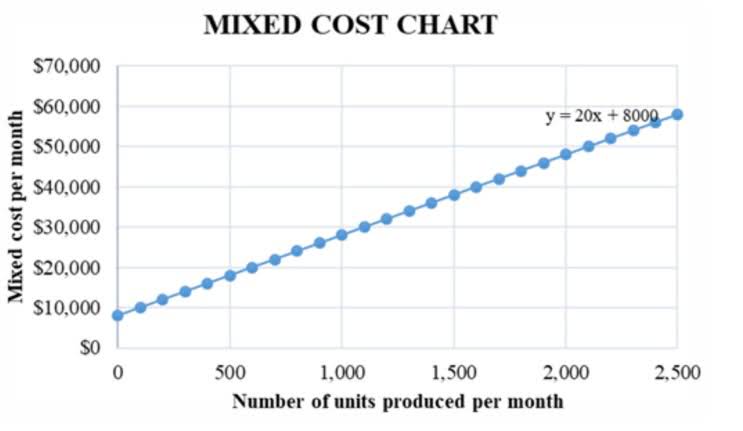Bookkeeping
What Are Assets, Liabilities, and Equity?

Although a lot of investment choices are based on the amount of risk we are willing to face, we cannot ignore all the important factors mentioned above. The sum of the company’s liabilities is the next component of the equation. Upgrading to a paid membership gives you access to our extensive collection of plug-and-play Templates designed to power your performance—as well as CFI’s full course catalog and accredited Certification Programs. The benefit is that there are no interest payments or requirements to return the investment.
How Net Income Impacts Retained Earnings
Consolidated Adjusted EBITDA and Distributable Cash Flow are non-GAAP financial measures that we use to facilitate comparisons of operating performance across periods. These non-GAAP measures should be viewed as a supplement to and not a substitute for our U.S. GAAP measures of performance and the financial results calculated in accordance with U.S. Looking at the same period one year earlier, we can see that the year-over-year (YOY) change in equity was an increase of $9.5 billion. The balance sheet shows this increase is due to a decrease in liabilities larger than the decrease in assets. Unlike example #1, where we paid for an increase in the company’s assets with equity, here we’ve paid for it with debt.
Common shareholders’ equity

Retained earnings refer to the company’s net income or loss over the lifetime of the enterprise (subtracting any dividends paid to investors). Retained earnings are the profits that a firm has left over after issuing dividends. This account contains all the surplus funds that a company has retained throughout its existence. It is usually found under the shareholders’ equity section on the balance sheet. In this formula, the equity of the shareholders is the difference between the total assets and the total liabilities. For example, if a company has $80,000 in total assets and $40,000 in liabilities, the shareholders’ equity is $40,000.
- Retained earnings are a clearer indicator of financial health than a company’s profits because you can have a positive net income but once dividends are paid out, you have a negative cash flow.
- 5) “First Cargo” refers to management’s current estimate of the date on which LNG cargo sales are expected for a project.
- The company uses this account when it reports sales of goods, generally under cost of goods sold in the income statement.
- Partners use the term “partners’ equity.” Partner ownership works in a similar way to ownership of a sole proprietorship.
- If a share is issued with a par value of $1 but sells for $30, the additional paid-in capital for that share is $29.
Retained earnings formula and calculation

Sandra’s areas of focus include advising real estate agents, brokers, and investors. She supports small businesses in growing to their first six figures and beyond. Alongside her accounting practice, Sandra is a Money and Life Coach for women in business. If the company is experiencing a net loss on its Income Statement, then the net loss is subtracted from the existing retained earnings. To better explain the retained earnings calculation, we’ll use a realistic retained earnings example. Let’s say that a marketer named Elena is looking to expand her agency, but needs to provide some information about retained earnings to attract new investment.
Cash (an asset) rises by $10M, and Share Capital (an equity account) rises by $10M, balancing out the balance sheet. Most shareholders prefer that companies issue retained earnings as dividends or reinvest them to increase their growth. Ways of describing negative retained earnings in the balance sheet are accumulated deficit, accumulated losses, or retained losses. One especially useful tool in analyzing a company’s value is the retained earnings to market value ratio. This ratio can provide insight into how effectively companies allocate their earnings to suitable investments that increase share value for growth companies. The simplest and quickest method of calculating stockholders’ equity is by using the basic accounting equation.
For example, a company whose equity has steadily declined over time is saving fewer assets and spending more on liabilities. They can save retained earnings, which are added to the balance sheet for the following year as Beginning Period Retained Earnings, and increase retained earnings for that year, thereby increasing the equity. The amount raised by the company by selling shares to investors is referred to as invested capital. In other words, it is the amount of money invested in the company by its shareholders.
Your Bench account’s Overview page offers an at-a-glance summary of your income statement and balance sheet, allowing you to review your profitability and stay on top of your cash flow from month to month. Spend less time figuring out your cash flow and more time optimizing it with Bench. Equity is the portion of a company’s value that can be attributed to its owners. The remaining claims of a corporation’s owners against the company after its debts have been settled are referred to as shareholders equity. You must add long-term assets to current assets to get the total assets for this equity formula. The dividends are the third factor that has an impact on shareholders equity on the balance sheet.
- Subtract the amount paid in dividends in the current accounting period from your retained earnings balance from that same period.
- Adjusted EBITDA(1) in the second quarter of 2024 reflects the completed sale of the power plants that we developed for FEMA in Puerto Rico and concurrent 80 TBtu island-wide gas contract awarded in March 2024.
- Retained earnings refer to the historical profits earned by a company, minus any dividends it paid in the past.
- The debt-to-equity ratio, or D/E ratio, is determined by dividing the total liabilities of the business by the equity held by shareholders.
- Management is pursuing a $659 million request for equitable adjustment related to the early termination of our contracts to provide emergency power services in Puerto Rico.
- Under U.S. GAAP, these accounts are presented in a statement that is most often called the Statement of Stockholders’ Equity.

The first is paid-in capital, or contributed capital—consisting of amounts paid in by owners. The second category is earned capital, consisting of amounts earned by the corporation as part of business operations. The stockholders’ equity section of the balance sheet forcorporations contains two primary categories assets minus liabilities and retained earnings of accounts. The firstis paid-in capital, or contributedcapital—consisting of amounts paid in by owners. The stockholders’ equity, also known as shareholders’ equity, represents the residual amount that the business owners would receive after all the assets are liquidated and all the debts are paid.
- Stockholders’ equity is also referred to as shareholders’ or owners’ equity.
- Negative earnings may result from a large dividend payment or worse, continuous and irrecoverable losses.
- The dividends are the third factor that has an impact on shareholders equity on the balance sheet.
- These statements report changes to your retained earnings over the course of an accounting period.
Shareholder’s Equity FAQ’s


